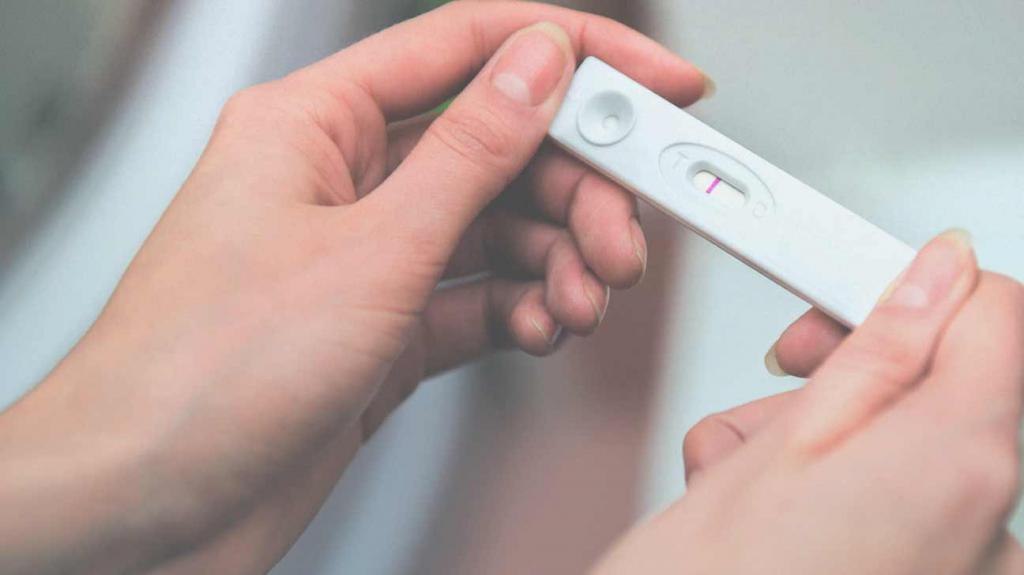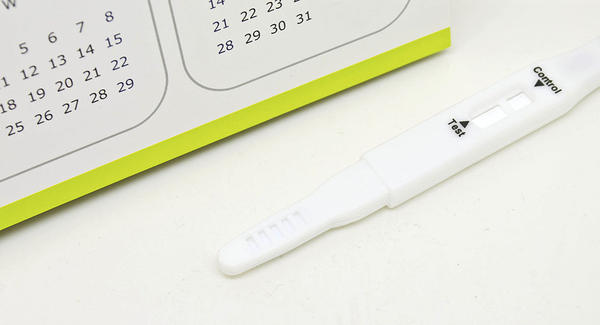Almost every woman faced with such a phenomenon as discharge after ovulation of brown color. Such discharge is regarded as a sign of a certain pathology. The fact is that in the genitals of women there are constant changes, especially during ovulation. Understanding the changes that are taking place allows you to plan a conception or, conversely, to avoid it, and also to identify probable pathologies in time.

Ovulation process
To understand why ovulation of brown color can occur during this period, and whether this is the norm, you should know what processes occur in the female body when the egg matures. And the following happens:
- follicular maturation;
- follicle exit (ovulation);
- the release of the hormone progesterone.
At any period of the menstrual cycle, attention should be paid to mucous secretions. They are always present and under the influence of physiological changes, their consistency changes.
Around the second week of the cycle, ovulation begins. A mature egg leaves the bursting follicle and begins to move into the uterus.
What influences the process?
Ovulation can be affected by such factors:
- abortion and gynecological surgery;
- hormonal background;
- spontaneous miscarriages.
Such pathological phenomena entail a lot of negative consequences. In addition, the cycle is broken for other reasons: taking medication, thyroid disease, the presence of genital infections, etc.

Typical symptoms
Some women easily determine the period of onset of ovulation by a number of signs:
- change in the nature of cervical secretions;
- a change in libido (increases);
- increase in basal temperature;
- breast engorgement;
- pain in the lower abdomen.
Possible diseases
Sometimes brown discharge during ovulation is outside the normal range and may be cause for concern. You can determine them by the following criteria:
- intensity;
- extraneous odor;
- profusion.
In the presence of genital infections, specific discharge is observed, which may have a dirty pink or brown shade and be accompanied by purulent discharge. Pathological discharge occurs mainly in the middle of the cycle, since at this time, under the influence of hormones, genital infections, as a rule, worsen.
In addition, discharge during ovulation of brown color may be associated with hormonal imbalance, which occurs as a result of the use of inappropriate oral contraceptives, as well as during getting used to them or against the background of thyroid diseases.

Approximately the same manifestations have erosion of the cervix. Its development leads to the destruction of cells of the epithelial layer covering the neck, the formation of wounds on it. In this case, a woman can observe brownish discharge, slight and spotting. If this pathology is not treated in time, inflammatory processes may develop that become a consequence of the attachment of a bacterial infection.
If the discharge in a woman in the middle of the cycle has a brown color and a sharp unpleasant smell, this can serve as the first sign of neoplasms in the pelvic organs. This symptom is very serious, and you should not ignore it.
Brown discharge is normal.
Discharges during ovulation of brown color can be both a normal phenomenon and a pathology, indicating the presence of serious processes.
They can be considered normal in the following cases:
- with a rare appearance;
- in the absence of pain and an unpleasant odor;
- when appearing for one to two days.
In such cases, discharge during brown ovulation is considered a sign of rupture of the follicle and the release of a mature egg. This process is accompanied by the formation of the corpus luteum, damage to the walls of the follicle, around which there are many small vessels. When some of them burst, blood enters the cervical mucus and a brown color appears in the discharge.

Pathology
If such a phenomenon occurs in the middle of the cycle, and has minor, painless manifestations, we can consider this a normal ovulatory process and not worry. In other cases, brown discharge after ovulation is not harmless and is a sign that certain pathological changes have occurred in the female body that affect the reproductive system.
The causes may be the following pathologies:
- bacterial infection;
- ectopic pregnancy;
- venereal disease;
- endometriosis;
- cervical trauma.
Ectopic pregnancy
If a woman has an ectopic pregnancy, discharge during the period of brown ovulation can persist for a certain time after ovulation, most often about five days. This is a very serious problem requiring urgent action. The success of subsequent therapy depends on how quickly the operation is performed, and the woman’s ability to have children in the future.
Cervical fluid, which is brown and dangerous, is not like the one that occurs during menstruation - bloody. The peculiarity of such mucus, if provoked by sexually transmitted diseases, is the presence of purulent elements in it. Such discharge usually has an unpleasant pungent odor.
One of the most serious consequences that a violation of ovulation can cause is infertility, so the appearance of brown discharge in the middle of the cycle, when ovulation is supposed to occur, is dangerous to neglect. Ovulation is the norm only in cases where they have transparency and a white tint, and last no more than two days.

The appearance of a brown discharge that is thick and plentiful before ovulation can be the main sign of some gynecological diseases, which are very dangerous for women's health.
Injuries
Brown discharge often occurs after trauma to the genital tract, for example, after an active sexual intercourse, an unsuccessful fall, gynecological manipulations, etc. In this case, blood vessels are injured inside the small pelvis, which secrete blood, which, in turn, leaves the genital area paths thickens and acquires a brownish tint.
Diagnostics
If any abnormal discharge occurs, a woman should consult a doctor and find out the nature of their origin. This is necessary in order to avoid the development of a possible pathological process and to cure the disease in the very early stages.
The specialist must conduct the correct diagnosis, which includes a whole range of procedures. First, the doctor should examine the woman in the gynecological chair, using special tools and palpation techniques. This helps to identify the primary signs of pathology and suspect the presence of tumor processes in the genitals.
In addition, the diagnosis of the causes of brown discharge during ovulation includes certain laboratory tests. In this case, general blood and urine tests, a smear and cervical mucus test are performed. A necessary diagnostic measure is a blood test for sex hormones and those produced by the thyroid gland, since a change in hormonal balance also entails a violation of reproductive functions. Hormone tests are carried out taking into account the days of the menstrual cycle, while a certain hormone reaches the required level on a certain day. It is also necessary to consider the doctor when prescribing such studies.
Functional diagnostics also help determine the causes of a brownish discharge in a woman during the ovulatory period. It involves an ultrasound examination, in which structural disorders of the organs and possible pathologies are revealed.

Treatment
Therapy of brown discharge during ovulation depends on what disease was detected in the woman during the diagnosis. If she has an ectopic pregnancy, the doctor prescribes an emergency operation to remove the fetal egg from the lumen of the fallopian tube.
If sexually transmitted or inflammatory diseases are detected, a woman is prescribed a course of therapy with antibacterial and anti-inflammatory drugs, to which a particular type of infectious agent is sensitive. Such drugs can be taken orally, and can be presented in various forms for local use, for example, in the form of vaginal suppositories.
In cases where brown discharge during the ovulation period was the result of certain hormonal imbalances, the treatment should be carried out by an endocrinologist-gynecologist who selects a hormonal therapy regimen in each case individually, taking into account the diagnosed levels of a hormone.
Gynecologist's advice
Gynecologists always recommend women to be attentive to their health and in case of any pathological phenomena to seek help in time, since it is much easier and safer to diagnose and cure a disease in the early stages of its development than at an advanced stage. Experts advise women who have brown discharge during ovulation, to observe them and their well-being - if nothing hurts, the body temperature does not rise, and smearing phenomena stop after a couple of days, then there is usually no reason for alarm. This phenomenon is directly related to the natural ovulatory process, which from time to time may be accompanied by brown secretions. If the discharge does not stop for more than three days, the amount of discharge is higher than the norm, and the woman is worried about pain in the pelvis - this is a sign that she is developing a certain disease or an ectopic pregnancy, and this is an occasion for an urgent visit to the doctor. This is especially true in cases where a woman observes brown discharge after ovulation several times a year or every menstrual cycle.

Patient Reviews
Most women who observed brown discharge during ovulation showed no pathological abnormalities. They note that the discharge began about 10-13 days after the start of a new cycle and did not last long - one or two days. In this category of women, this phenomenon was associated with a natural release of the egg and trauma to small capillary vessels, which led to insignificant discharge during brown ovulation.
Reviews do not end there.
Another group of women faced with a similar phenomenon, note that they had it caused by some inflammatory processes provoked by infection, hypothermia, etc. They needed medical treatment, which included, most often, taking antibiotics and anti-inflammatory drugs. The discharge itself in such situations had a vivid character - cinnamon color, profusion, intensity of discharge. In case of inflammation, according to the patients, brown discharge can manifest itself not only during the ovulation period, but also on any other day of the cycle, therefore, other women are advised to be alert and consult doctors on time.